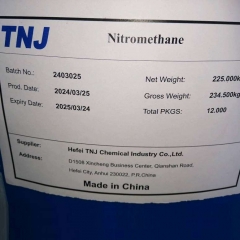Butyryl chloride CAS 141-75-3 (also known as n-Butyryl chloride, butanoyl chloride, or C-4 Acyl halide) is an organic compound with the chemical formula C4H7ClO. Butyryl chloride is liquid at room temperature, has a colorless to light yellowish appearance and has an extremely strong pungent odor.
Butyryl chloride is soluble in almost all aprotic organic solvents, but it decomposes violently by heating and spontaneously decomposes when exposed to moist air or water to form pure hydrochloric acid gas. It also reacts violently when mixed with strong oxidants, metals (especially iron), alkali metals, alkali earth metals, bases and wide range of organic substances such as amines, dimethyl sulfoxide, and alcohols. These reactions tend to result in explosions and fire;
Properties
- Colorless transparent fuming liquid with irritating odor of hydrochloric acid.
- Relative density:(d204) 1.0277
- Freezing point:-89℃
- Boiling point: 102℃(100Kpa)
- Refractive index:(nD20) 1.4121
- Miscible with ether, decomposed in water or alcohol.
Specification
Purity, % ≥99Boiling point 102°C
Solution transparency Colorless and transparent
Non-volatile matter,% ≤0.005
Phosphorus compound(PO45), % ≤0.02
Application
Derivatives of butyryl chloride are used in manufacturing pesticides, pharmaceuticals, perfume fixative, polymerization catalyst, and dyestuffs. Butyryl chloride is also commonly used as an intermediate for organic synthesis for the preparation of pharmaceuticals, agrochemicals, dyes, esters, and peroxide compounds.
Butyryl chloride is highly flammable and fumes in air. It decomposes exothermically in water to give corrosive hydrochloric acid. Based on a scenario where the chemical is spilled into an excess of water (at least 5 fold excess of water), half of the maximum theoretical yield of Hydrogen Chloride gas will be created in 0.47 minutes. May react vigorously or explosively if mixed with diisopropyl ether or other ethers in the presence of trace amounts of metal salts.
Packing
200 kgs/drumx80 drums=16 tons/1x20' FCL
















 chemical.tnj
chemical.tnj +8618949823763
+8618949823763 tnjchem
tnjchem 2881500864
2881500864